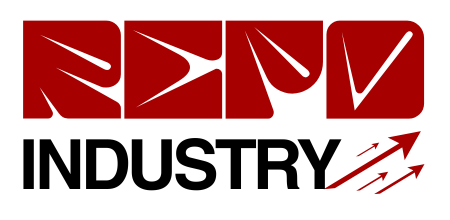Understanding Capital Injection and Its Importance
Capital injection, while often viewed as a technical financial term, is a lifeline for businesses. It refers to an infusion of cash into a company or financial institution, boosting financial stability, sustaining operations, or enabling expansion. This support can come from the government or private investors. For entrepreneurs, finance professionals, and business owners, understanding the concept, mechanism, and benefits of capital injection is crucial to navigating growth opportunities effectively.
At its core, a capital injection strengthens a company’s foundation, allowing it to fulfill operational expenses, invest in growth initiatives, and weather financial challenges. Whether you’re an established business owner or an aspiring entrepreneur looking to scale, mastering the dynamics of capital injection can transform your financial strategy.
Read on to discover how capital injections work, their impact on business success, and actionable steps to secure one.
The Dynamics of Capital Injection in the Financial Sector
Capital injection plays a vital role in the financial sector, ensuring the stability and sustainability of businesses, startups, and even large corporations. Financial markets rely on the availability of liquidity, and capital injections often act as the stopgap that stabilizes entities when faced with unexpected challenges, such as economic downturns or operational shortfalls.
This mechanism has a ripple effect on the broader economy, ensuring that businesses remain functional and employees retain their jobs. For example, during the 2008 global financial crisis, government-led capital injections played a major role in rescuing industries critical to the economy.
Furthermore, capital injection is also a tool used to revitalize small businesses or startups, ensuring they have the cash flow required to innovate, enter new markets, or scale operations.
Sources of Capital Injection: Government vs. Private Investors
The funding for capital injections primarily originates from two sources—governments and private investors—each coming with its benefits and challenges. Let’s break them down.
Government Capital Injection
Governments often provide financial aid or bailout packages in dire circumstances, particularly during economic recessions or crises. For instance, in 2020, amid the COVID-19 pandemic, countless businesses received cash infusions from government programs to stay solvent.
Key features of government capital injections include:
- Purpose-driven support to stabilize industries critical to the economy.
- Often low-interest or no-interest loans for struggling firms.
- Conditions attached for usage to ensure proper fund allocation.
However, government capital injections can sometimes come with strict accountability measures and limited availability.
Private Investor Capital Injection
Private investors, such as venture capitalists, angel investors, or equity firms, provide a highly sought-after stream of capital. These investments often provide not only funding but also access to important industry connections and expertise.
Key features of private investor capital injections include:
- Flexibility and speed compared to government processes.
- Often entail giving investors an equity stake or partnership role in the business.
- Focus on high growth potential businesses, such as startups or innovative industries.
Private capital comes with the expectation of profitability and may carry risks of diluting ownership control.
The Impact of Capital Injection on Business Growth and Stability
Capital injection serves as a powerful stimulant for business growth across industries. When allocated effectively, it can facilitate the following benefits for businesses.
1. Strengthened Financial Backbone
Injecting capital into the business improves liquidity, allowing companies to pay off debts, invest in infrastructure, and integrate advanced technologies for streamlined operations.
2. Facilitating Innovation
New products, services, or ideas often remain out of reach without the necessary funding. Capital injection acts as the bridge that allows businesses to invest in innovation and stay competitive.
3. Accelerated Market Entry
Businesses can allocate funds toward marketing, staffing, and scaling operations, allowing them to capture a larger market share faster.
4. Providing Assurance to Stakeholders
Whether it’s paying dividends or gaining customer trust, stable financials backed by capital injections provide confidence to all stakeholders.
How to Secure a Capital Injection: Key Steps and Considerations
When pursuing a capital injection, it’s important to take calculated measures. Here’s a structured approach to get started.
Step 1. Assess Your Funding Needs
Identify specific financial shortfalls or growth opportunities, analyze the total amount needed, and determine the purpose of the funding.
Step 2. Develop a Business Plan
Craft a solid, data-backed business plan outlining how the capital will be utilized. Ensure you include growth projections, revenue streams, and a risk management strategy.
Step 3. Choose the Right Source of Funding
Decide whether government programs, venture capital, angel investors, or bank loans align best with your goals and flexibility requirements.
Step 4. Network and Pitch
Seek out connections in your chosen funding network and present a well-rehearsed pitch focusing on profitability and growth.
Step 5. Negotiate Terms
Evaluate interest rates, ownership requirements, or loan conditions carefully before finalizing agreements. Seek professional advice if necessary.
Real-World Examples of Successful Capital Injections
Airbnb
During the height of the COVID-19 pandemic when travel ground to a halt, Airbnb secured $2 billion through private equity firms to maintain operations, pivot its strategy, and develop online experiences.
General Motors
During the 2008 crisis, GM received a substantial government bailout to prevent the collapse of the automotive industry. This capital injection saved thousands of jobs and ensured the continuity of critical supply chains.
MonieVest Businesses
Companies that partnered with MonieVest to secure capital injections reported accelerated growth and improved financial stability, showcasing the platform’s reliability in providing targeted solutions.
Critically Assessing the Risks and Challenges of Capital Injection
While capital injections are invaluable tools, they’re not without risks. Here are the common pitfalls to watch out for.
- Loss of Ownership Control
Dilution of equity may lead to a loss of autonomy in decision-making for businesses backed by private investors.
- Debt Burden
Over-reliance on loans may result in unsustainable repayment obligations if growth targets aren’t met.
- Misallocation of Funds
If funds aren’t utilized strategically, the desired outcomes or returns may never materialize.
Businesses must have robust strategies and a clear plan of execution when seeking financial support.
Building a Resilient Future with Strategic Financial Infusions
Capital injection remains an essential mechanism for propelling businesses toward sustainable growth and financial recovery. By understanding its dynamics, sources, impacts, and challenges, enterprises can make informed choices that pave the way for long-term success.
Looking for ways to secure your next capital injection? Contact MonieVest today and lay the foundation for a brighter future!
YOU MAY ALSO LIKE
ecrypto1.com Crypto Wallets: Secure Trading for Every Trader
Conclusion
Securing the right financial support is more than just about accessing capital—it’s about strategically positioning your business for resilience and growth. A well-executed capital injection can provide the resources needed to overcome challenges, scale operations, and achieve your long-term vision. By partnering with trusted experts like MonieVest, you can gain invaluable guidance and tailored solutions to meet your business needs. The path to a stronger, more prosperous future starts with the decisions you make today.
FAQs
What is capital injection?
Capital injection describes the infusion of external funds into a company to stabilize or expand its financial operations.
What are key benefits of capital injection?
Capital injection boosts liquidity, fosters growth, facilitates market entry, and strengthens financial stability.
How do I secure a capital injection?
Start by assessing funding requirements, preparing a business plan, choosing a source, and pitching effectively to investors or government programs.
What are some risks of capital injections?
Risks may include debt burden, dilution of ownership, or misallocation of funds if not managed carefully.
Why is capital injection important for startups?
It offers startups essential funding for innovation, market capture, and establishing operations while alleviating financial pressure.











